Philadelphia Museum of Art
April 18 —September 3, 2018
American artists in the first half of the twentieth century created a bold new artistic language to capture the essence of modern life. This wide-ranging exhibition reframes examples of American Modernism in the collection, with an emphasis on painting and sculpture, along with select examples of prints, drawings, photographs, decorative arts, and costumes. It features works by internationally acclaimed artists from the circle of the photographer and gallerist Alfred Stieglitz, such as Georgia O’Keeffe, Marsden Hartley, and Arthur Dove, along with equally significant if lesser-known artists who contributed to the art of their day.
The exhibition also explores modernity from a less formal angle, focusing on work by artists who were drawn to depict modern amusements and moments of daily life, from burlesque performances and beach scenes by Reginald Marsh and George Bellows to vignettes of people quietly occupying public spaces by Ben Shahn and Jacob Lawrence. The newest acquisitions to be included are two paintings by Horace Pippin and the singular work, Road and Trees by Edward Hopper.

The Museum will publish a catalogue in conjunction with the exhibition, co-published by Yale University.

Spring Sale at Bendel's, 1921, by Florine Stettheimer, American, 1871 – 1944. Oil on canvas, 50 x 40 inches (127 x 101.6 cm). Philadelphia Museum of Art: Gift of Miss Ettie Stettheimer

Pertaining to Yachts and Yachting, 1922, by Charles Sheeler, American, 1883 – 1965. Oil on canvas, 20 x 24 1/16 inches (50.8 x 61.1 cm). Philadelphia Museum of Art: Bequest of Margaretta S. Hinchman, 1955-96-9.

Neighbors, 1951, by Charles Sheeler, American, 1883 – 1965. Oil on canvas, 18 x 15 inches (45.7 x 38.1 cm); Frame: 26 1/2 × 23 1/2 inches (67.3 × 59.7 cm). Philadelphia Museum of Art: Gift of C. K. Williams, II, 2015-8-2.

Portrait of James Baldwin, 1945, by Beauford Delaney, American (active Paris), 1901 – 1979. Oil on canvas, 22 x 18 inches (55.9 x 45.7 cm). Philadelphia Museum of Art: 125th Anniversary Acquisition. Purchased with funds contributed by The Daniel W. Dietrich Foundation in memory of Joseph C. Bailey and with a grant from The Judith Rothschild Foundation, 1998-3-1.

Something on the Eight Ball, 1953-1954, by Stuart Davis, American, 1892 - 1964. Oil on canvas, 56 × 45 inches (142.2 × 114.3 cm). Philadelphia Museum of Art: Purchased with the Adele Haas Turner and Beatrice Pastorius Turner Memorial Fund, 1954-30-1. © Estate of Stuart Davis / Licensed by VAGA, New York.

View from Ship, c. 1932, by Jan Matulka, American (born Czech Republic), 1890 - 1972. Oil on canvas, 36 x 30 inches (91.4 x 76.2 cm). Philadelphia Museum of Art: Gift of C. K. Williams, II, 2015-8-1. © The Estate of Jan Matulka.
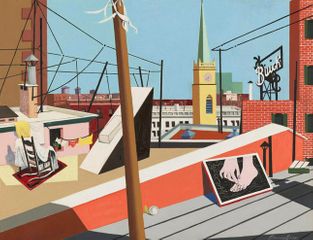
Words and Music of Two Hemispheres Francis Criss, American (born England), 1901 - 1973 © Estate of Francis Criss
More details:

Red and Orange Streak, 1919, by Georgia O'Keeffe, American, 1887 - 1986. Oil on canvas, 27 x 23 inches. Philadelphia Museum of Art: Bequest of Georgia O'Keeffe for the Alfred Stieglitz Collection
An exhibition in Philadelphia, from April 18 to Sept. 3, 2018, explores the creative responses of American artists to the rapid pace of change during the early twentieth century and the new visual language that emerged.
This spring, the Philadelphia Museum of Art will present an exhibition exploring the creative responses of American artists to the rapid pace of change that occurred in this country during the early decades of the twentieth century. Modern Times: American Art 1910–1950 examines the new and dynamic visual language that emerged during this period and had a dramatic impact on painting, sculpture, printmaking, photography, architecture, and the decorative arts. These developments were shaped by the dizzying transformations then occurring in every aspect of life, from the advent of the automobile and moving pictures to the rapid growth of American cities and the wrenching economic change brought on by the advent of the Great Depression after a decade of unprecedented prosperity.
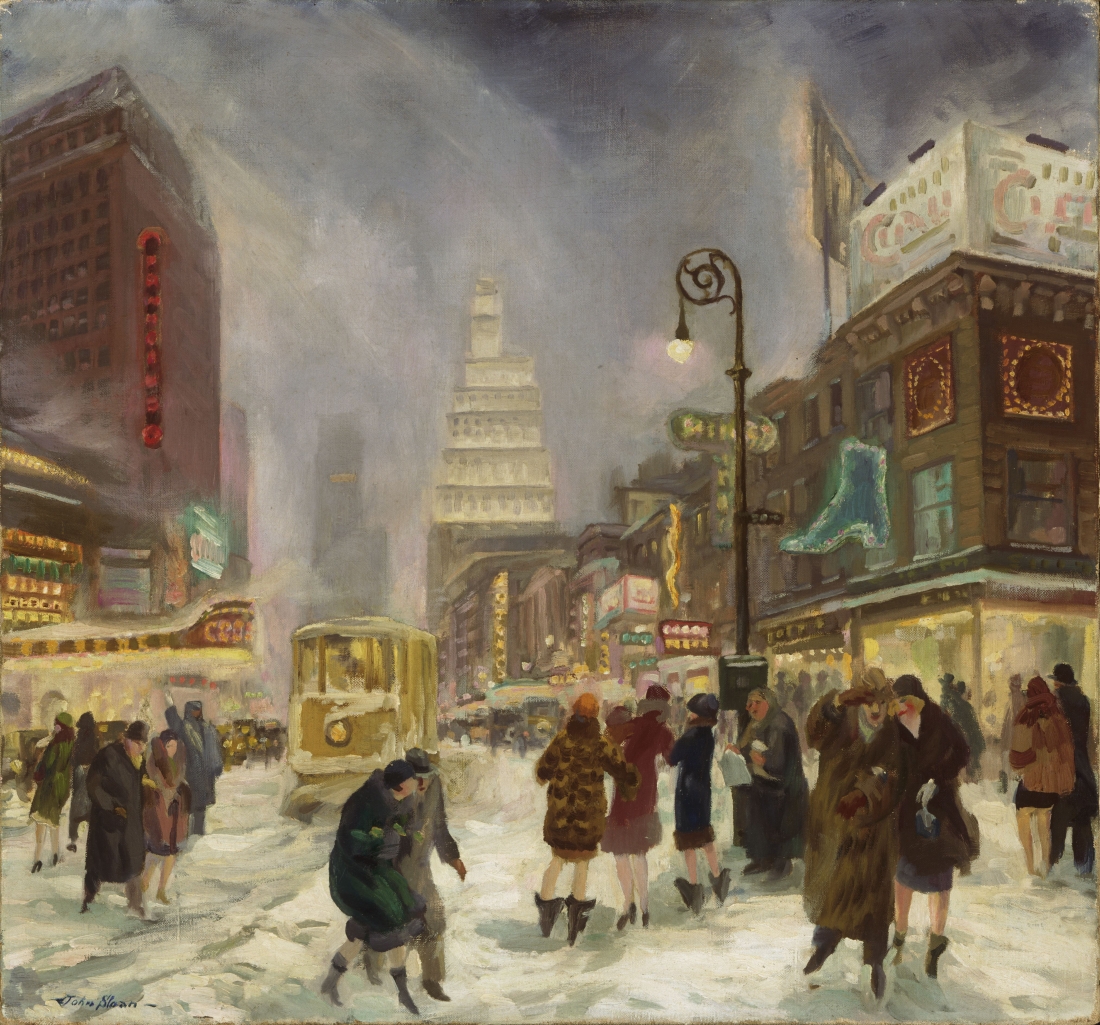
The White Way, c. 1926, by John Sloan, American, 1871 - 1951. Oil on canvas, 30 1/8 x 32 1/4 inches. Philadelphia Museum of Art: Gift of Mrs. Cyrus McCormick, 1946-10-2

Timothy Rub, the Museum’s George D. Widener Director and Chief Executive Officer, stated: “America’s embrace of modern life—its perils as well as its promise—in the early twentieth century was expressed most clearly in the arts. The work of this period still feels fresh and of the moment. This exhibition provides us with a welcome opportunity to reassess the Museum’s exceptionally rich holdings of modern American art and how we may display them to full advantage in the future when the Museum completes its expansion under its Master Plan. It also holds the promise of many surprises and discoveries for our visitors.”

 Painting No.4 (A Black Horse) | by Marsden Hartley
Painting No.4 (A Black Horse) | by Marsden HartleyWhile the Museum has presented a number of exhibitions devoted to this subject over the years, Modern Times is the largest and most comprehensive since it presented the collection of Alfred Stieglitz in 1944. The exhibition opens with the achievements of some of the leading figures of “The Eight,” including John Sloan and George Bellows, who recorded the changing urban scene with a gritty realism as horse carts gave way to motor vehicles on city streets.
The exhibition emphasizes those artists—among them Charles Demuth, Morton Schamberg, Charles Sheeler, Benton Spruance, and Paul Strand—who responded to the Armory Show of 1913 and the influence of the European avant garde by seeking to give modernism an authentic American voice. Offering a broader perspective on American art of this period, the exhibition explores the achievements of important African American figures, such as Aaron Douglas, William Edmondson, Horace Pippin and Dox Thrash. It also looks at cross-currents within the arts, including contemporary fashion and design, and work by female artists such as O’Keeffe, Florine Stettheimer, Frances Simpson Stevens, Kay Sage, and Dorothea Tanning.
One section of the exhibition takes a close look at the many artists who explored in their work the abstract qualities of rhythm, light, and sound. Some of their aesthetic strategies were employed to create dynamic still lifes, enlivening what was commonly considered a static genre. Another section explores the expressive use of color, focusing on Arthur Beecher Carles, Henry Breckenridge, and Henry McCarter who stretched the boundaries of artistic tradition by relieving color of its purely descriptive function. These three artists, each of whom lived and worked in Philadelphia, reflected this city’s active engagement with progressive trends in American art. In fact, the significant role that Philadelphia played in the history of American modernism is echoed throughout the exhibition. It includes works by Philadelphia-born artists such as Man Ray and Alexander Calder who became prominent abroad, where they were closely aligned with modern movements in Europe, and others who remained in the city in which the Pennsylvania Academy of the Fine Arts provided a center of energy and a place to teach.
Landscape painting was, likewise, revolutionized by the artists of this generation, who found in this traditional genre a sustained source of inspiration. The adaptation of the modernist vision to one of the most enduring themes in American art can be seen most dramatically in works by O’Keeffe, Hartley, and Arthur Dove. Others, such as Sheeler, took the stark, yet impressive geometry of the new industrial landscape as a point of departure. The exhibition also examines another familiar subject, the human figure, which proved to be of abiding interest to the artists of this generation. Included in this rich and fascinating section is a group of portraits by artists such as Milton Avery, Beauford Delaney, and John Graham.
Jessica Todd Smith, The Susan Gray Detweiler Curator of American Art, and Manager, Center for American Art, who organized the exhibition, said: “Modernism changed the way people saw the world around them. Artists pushed their work in new directions, embracing abstraction, while retaining connections to artistic traditions. This exhibition focuses on interrelationships among works of art rather than a single linear narrative. In fact, it gives voice to multiple narratives because the evolution and experimentation in the art of this period is especially fluid. This stylistic pluralism, the beautiful chaos of innovation, was a hallmark of the modern American movement.”
Publication

The exhibition is accompanied by a new publication, American Modernism: Highlights from the Philadelphia Museum of Art, by Jessica Todd Smith. It is published by the Philadelphia Museum of Art in association with Yale University Press ( 272 pp.) The title of the essay, “Seeing Takes Time” is inspired by a quotation of Georgia O’Keeffe: “Nobody sees a flower—really—it is so small—we haven’t time—and to see takes time .
. . “
With 120 color and 10 black-and-white illustrations, American Modernism is the first book to showcase this outstanding aspect of the collection of the Philadelphia Museum of Art, which was one of the first major museums in this country to acquire what we now call American Modernism. It tells a story that is unique to the Museum, examining the collection’s development since the 1920s and the role that the city of Philadelphia played in promoting modernism in the first half of the twentieth century. While previous publications have focused on European and American modernism, this one considers what it meant to be American and to be modern, exploring how these artists challenged convention without abandoning recognizable elements from the world around them.
In addition to focusing on internationally acclaimed artists from the circle of photographer and gallerist Alfred Stieglitz, including Arthur Dove, Marsden Hartley, Georgia O’Keeffe, and Charles Sheeler, Smith also considers those who contributed significantly to the art of the United States during their day but have been left outside the mainstream of art history, whether due to their race, gender, or social standing.
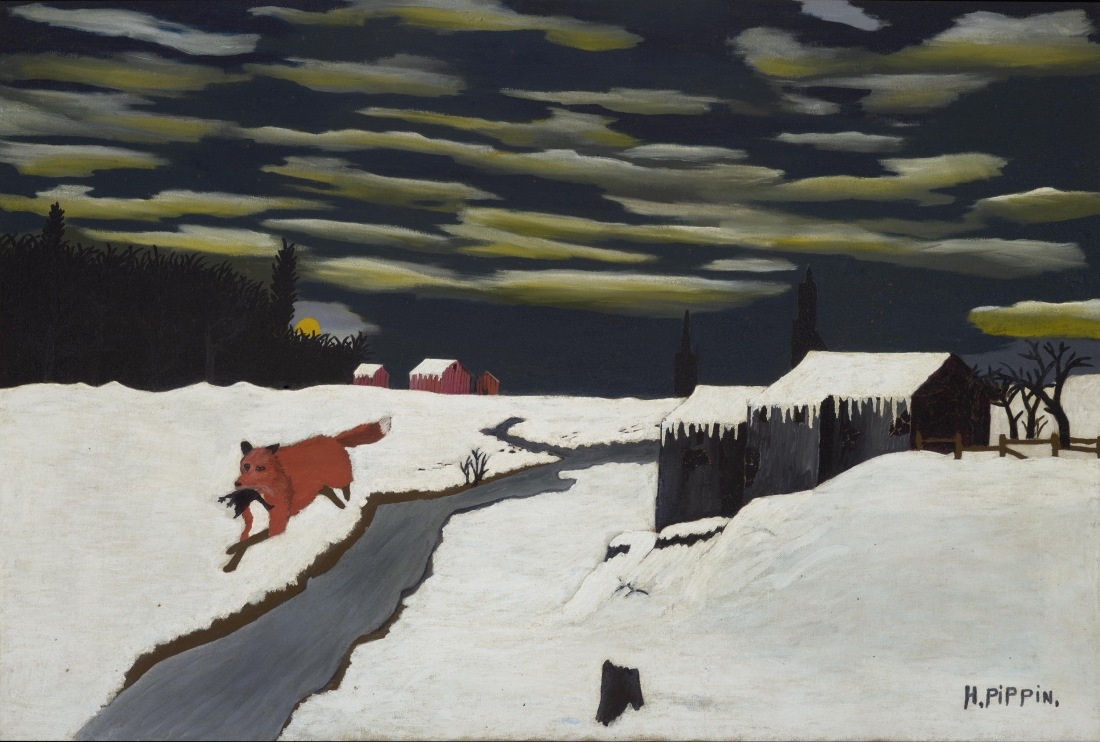
The Getaway, 1939, by Horace Pippin, American, 1888 - 1946. Oil on canvas, 24 5/8 x 36 inches. Philadelphia Museum of Art: Bequest of Daniel W. Dietrich II, 2016-3-3
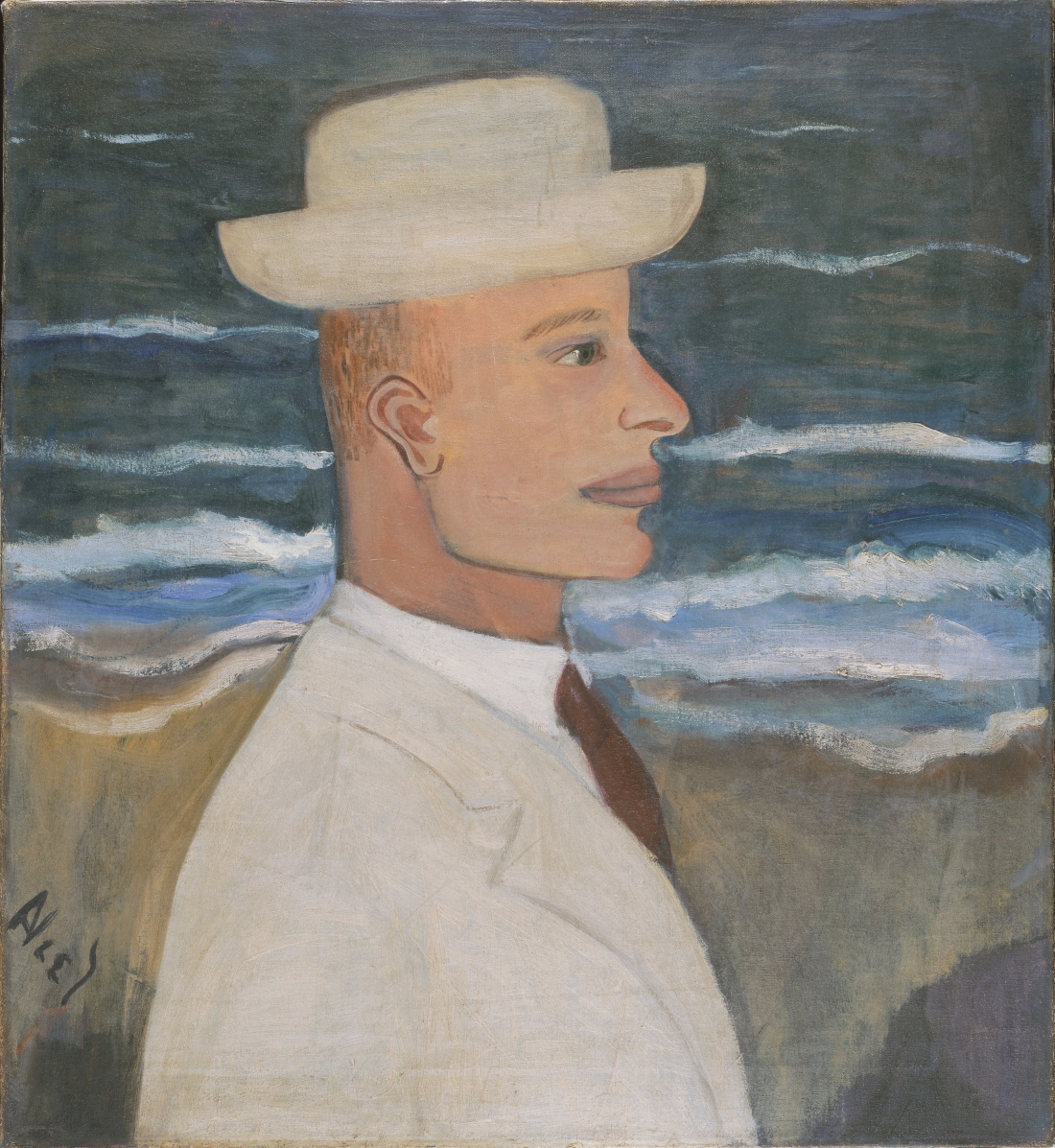
Portrait of John with Hat, 1935, by Alice Neel, American, 1900 - 1984. Oil on canvas, 23 1/2 x 21 1/2 inches. Philadelphia Museum of Art: Gift of the estate of Arthur M. Bullowa, 1993-119-2
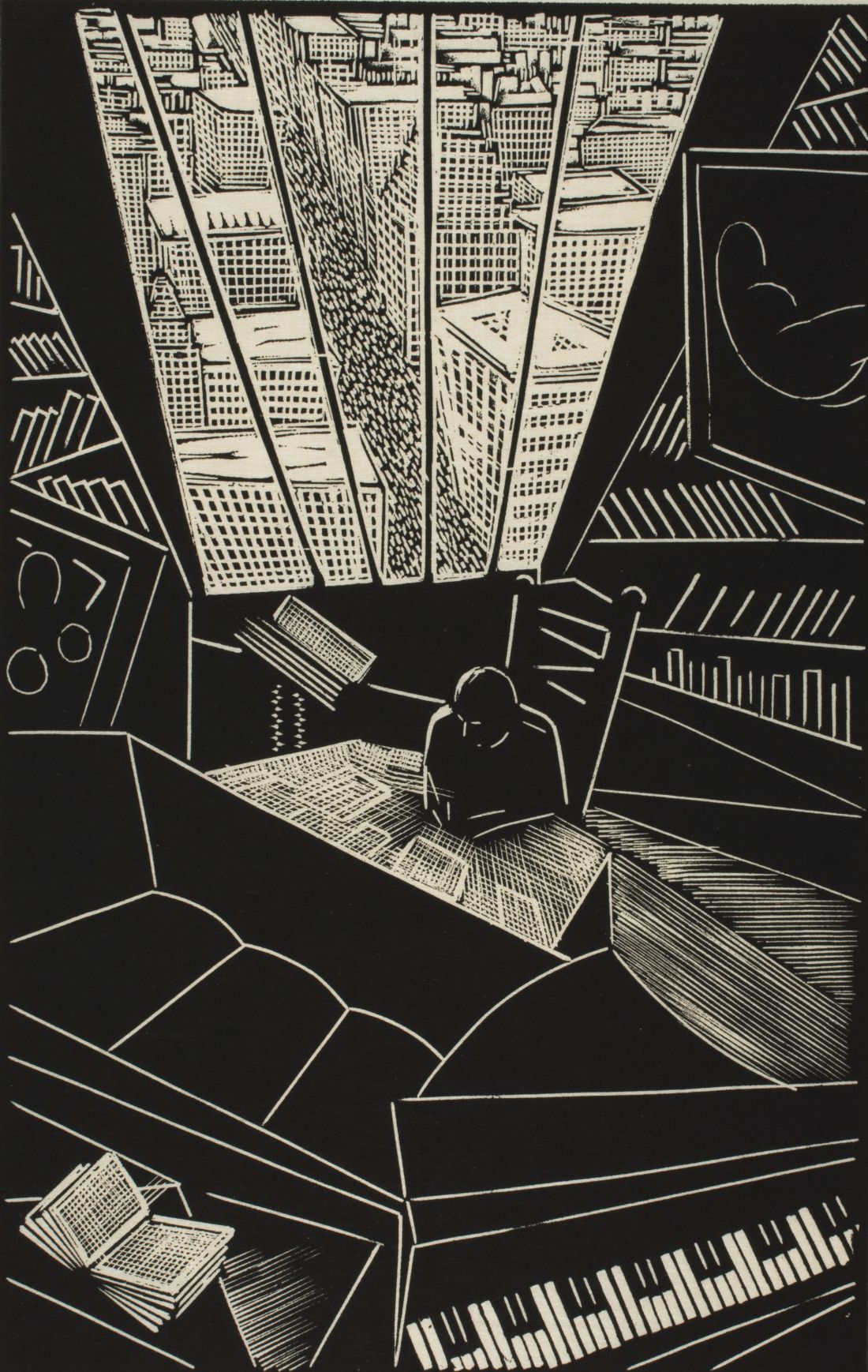
Of a Great City, 1923, by Wharton H. Esherick, American, 1887 - 1970. Wood engraving, image: 9 15/16 x 6 5/16 inches, sheet: 11 7/16 x 7 1/2 inches. Philadelphia Museum of Art: Purchased with the Lola Downin Peck Fund from the Carl and Laura Zigrosser Collection, 1979-12-11
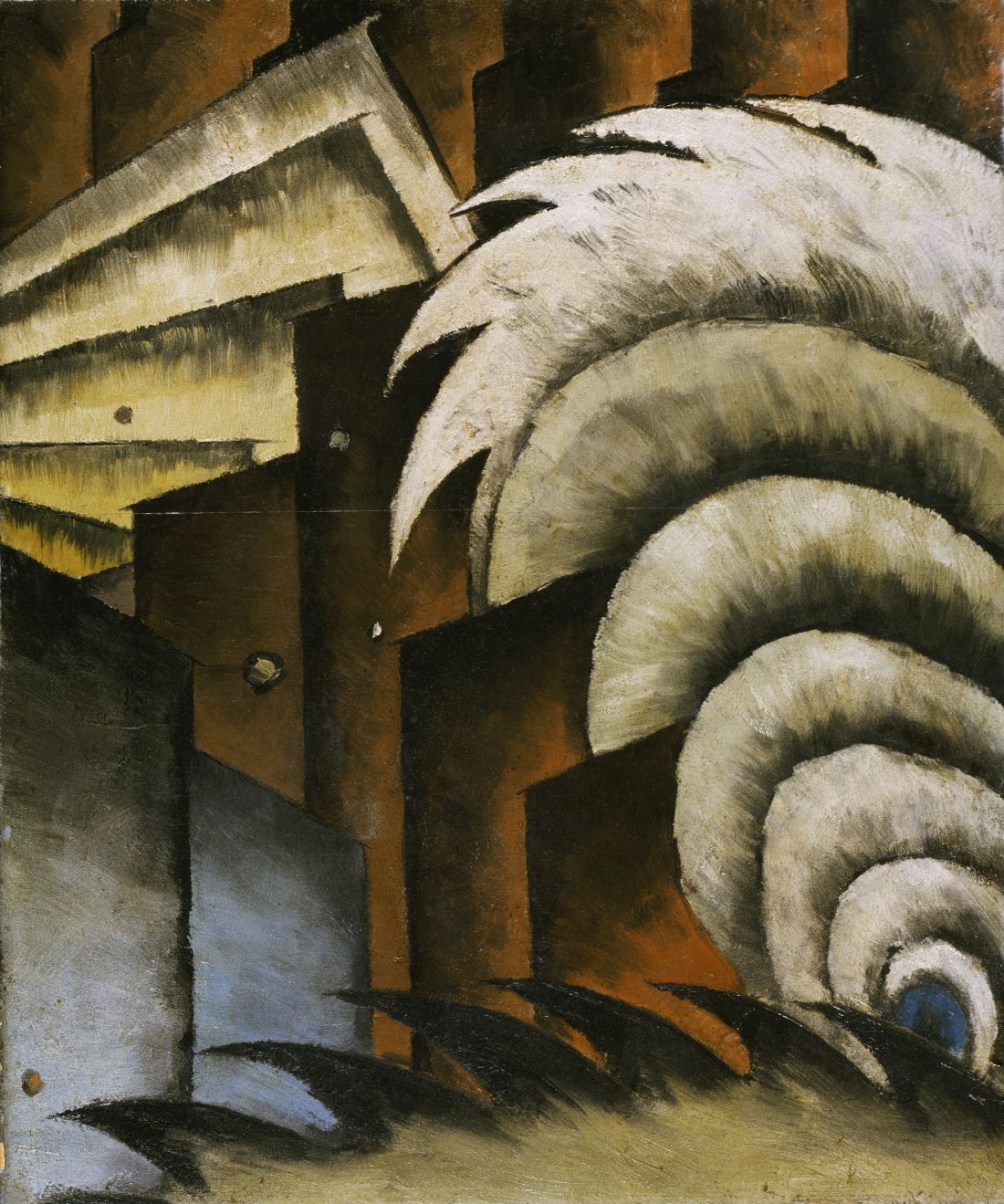
Chinese Music, 1923, by Arthur Dove, American, 1880 -1946. Oil and metallic paint on panel, 21 11/16 x 18 1/8 inches. Philadelphia Museum of Art: The Alfred Stieglitz Collection, 1949-18-2
